NotesFrom a Small Universe
Ideas on space, time and causality.
From Aristotle to Newton
It is 16th century Italy, it is the middle of the renaissance and new ideas about the universe and the laws that govern it are spreading throughout Europe. An eminent doctor is performing a human dissection to an audience, and after cutting open the body he shows a great trunk of nerves coming from the brain and travelling all over the body, with only a single fine strand connecting to the heart. Turning to a man in the audience who he knows to be a devout follower of the teachings of Aristotle, the doctor asks whether the man was at last satisfied and convinced that the nerves originate in the brain and not in the heart. The man replies, “You have made me see this matter so plainly and palpably that if Aristotle’s text were not contrary to it, stating clearly that the nerves originate in the heart, I should be forced to admit it to be true.”
This anecdote, related by Galileo in one of his books[1], demonstrates just how entrenched the ideas handed down from the ancient Greek world were. Aristotle in particular was held in high esteem and was regarded as the ultimate authority on everything from anatomy to astronomy. Between the 15th and 17th century this would completely change. Entirely new ideas would come to dominate mainstream thought, starting with Galileo’s popularisation of the idea that the Earth went around the sun and culminating in Newton’s laws of physics and gravitation which would be seen as the most fundamental of the laws of physics for hundreds of years.
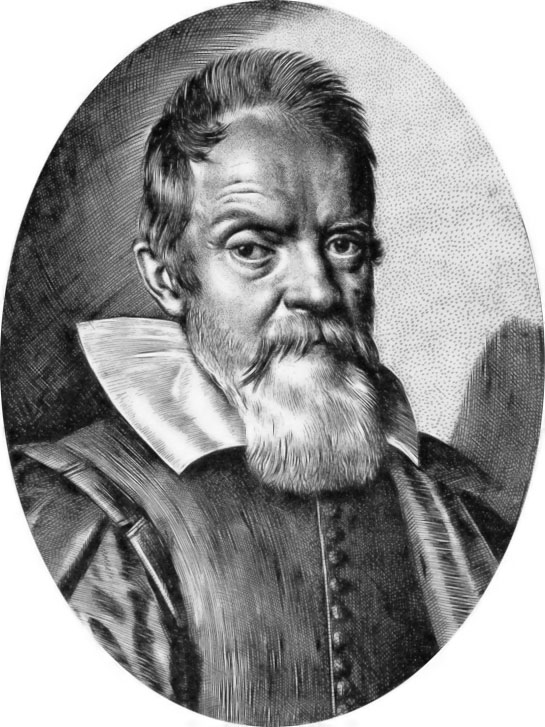
Galileo Galilei.
But Galileo’s new physics was far more than just a set of rules that described the motion of objects. For the first time humankind began to see that they were not at the centre of creation, and had to come to terms with the concept that the universe did not revolve around them. To a large degree, as a species we are still unsure what our place in the universe actually is.
Geocentrism: Copernicus, Tycho & Galileo
Aristotle’s model of the cosmos, its structure and composition, was closely entwined with his ideas about physics, the laws of nature to which all objects were bound. According to Aristotle, the Earth was in the centre of the universe. This was because the earthly elements, which comprise all the objects on the planet, naturally tried to get to the centre of the universe, which also explained why objects fell to the ground when dropped. These earthly elements also naturally came to a rest, which is why if you rolled a ball it would slow down and eventually stop. As well as the four earthly elements there was a fifth, heavenly element which made up the moon and everything beyond: the sun, the stars and the planets. In contrast to the earthly elements, this fifth element didn’t naturally come to rest or make its way to the centre of the universe but instead moved eternally in circles, which were considered the most perfect of shapes. In this view, the Earth stood stationary at the centre of the universe and the stars, sun, moon and planets all circled around the Earth creating day and night and the rising and setting of the stars. It is hard to overstate just how central these ideas were in Europe well into the Middle Ages; they were accepted almost beyond question.
By the 2nd Century AD, with patient observations of the heavenly bodies, it became apparent that the motions of the planets were not perfect circles in the sky. Indeed, planets could display ‘retrograde motion’ and appear to move backwards on their paths. Ptolemy explained this phenomenon in his great book on astronomy the Almagest by suggesting that within the circular orbit of each planet was nestled a sub-orbit called an epicycle (see Figure). As the planet moved around on its epicycle, the whole epicycle-system moved around the Earth. This was generally accepted as preserving the physics laid down by Aristotle since the motion of heavenly bodies were still described by (a combination of) perfect circles. The view published in the Almagest would be the definitive model of the universe in Europe and for centuries.
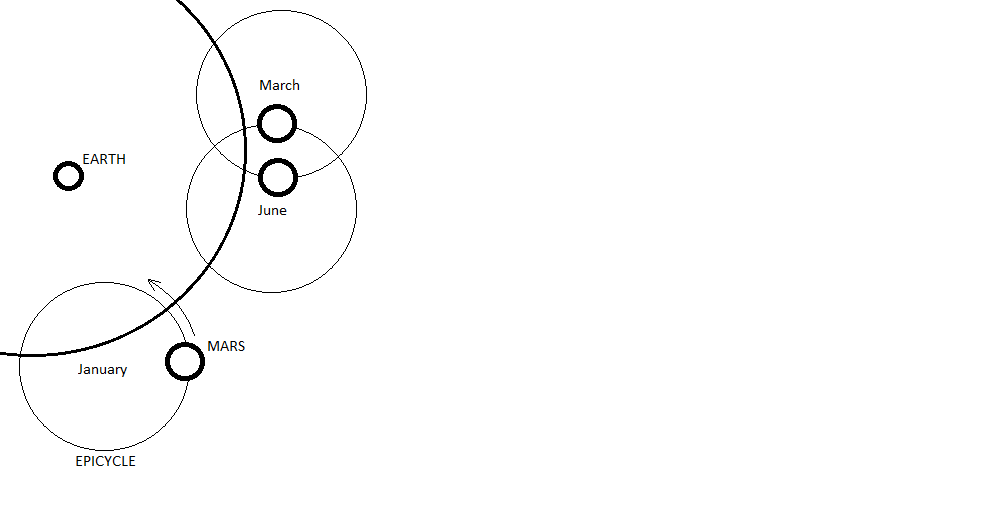
How Ptolemy explained retrograde motion. Earth is stationary at the centre. Mars is in an orbit around Earth but is also on an epicycle which rotates around the path of the orbit. The fact that Mars moves on an epicycle means that it can go backwards on the sky even though the centre of the epicycle always orbits the Earth in one direction.
In a book published just before he died in 1543, Nicolaus Copernicus suggested that the complicated motions of the planets could be explained if the sun was the centre of the universe and the Earth just another planet that orbited it over the course of the year. This model is called heliocentrism (sun-centred). In this picture the Earth spun on its axis to create the cycle of night and day. The retrograde motion of the planets is due to the outer planets having larger orbits than the inner planets (see Figure). Although the consensus among astronomers at the time was that Copernicus’ system provided a convenient tool for calculating the motions of planets, not everyone took the idea of the Earth moving around the Sun seriously. Firstly, it offended ideas of common sense, surely if the Earth was moving you would be able to feel it. Secondly, it offended the ideas of Aristotelian physics, that the Earth should naturally come to rest. (The same idea had been advanced before, the earliest person to do so probably being Aristarchus in the mid to late third century in Greece. Not enough writing still exists to know how seriously the idea was taken either by Aristarchus himself or his contemporaries but it is known that one contemporary called unsuccessfully for Aristarchus to be tried for heresy (impiety) for his suggestion. At any rate the model was not widely embraced and was soon forgotten [2] although Copernicus was aware of Aristarchus’ suggestion [3] .)
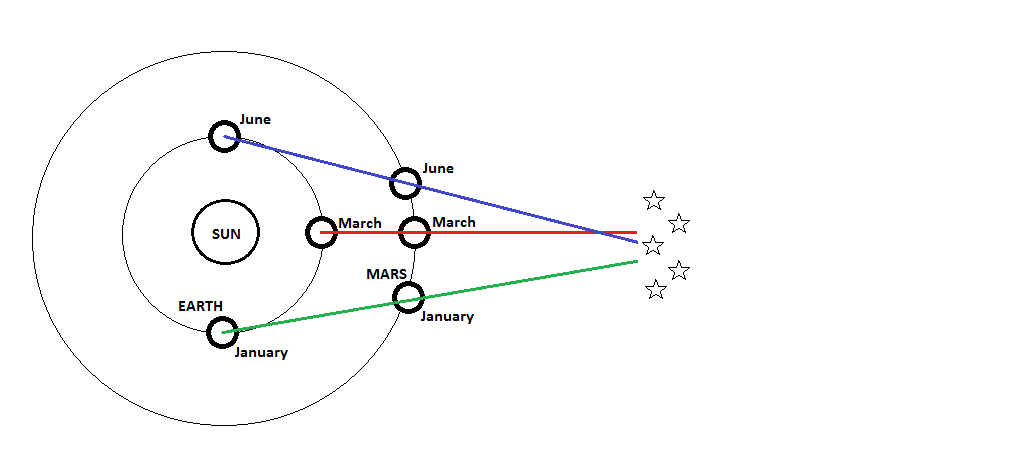
How retrograde motion arises whereby planets viewed from Earth appear to move backwards in the night sky over the course of the year. Both Earth and Mars orbit the sun but Mars' orbit is further out and it moves more slowly. Because Earth overtakes Mars, the position Mars appears to have relative to the stars (which don't appreciably move) can go backwards.
One of the people who did take the idea seriously was Galileo Galilei. Pioneering the use of the telescope, Galileo offered as evidence the fact that Venus has phases like the moon. We are all familiar with the phases of the moon: over a lunar month we go gradually from a new moon to a full moon and back again. The reason for this is that the position of the sun relative to the moon changes over lunar month. The moon always has one side illuminated by the sun and one side in darkness, exactly the same way that on Earth it is always day in one part and night in another. If the side of the moon that is lit by the sun happens to be facing the Earth we see a full moon and if the unlit side happens to be facing the Earth we see a new moon. And if we can see part of both lit and unlit sides we see a crescent or gibbous moon of greater or lesser extent.
What Galileo saw through the telescope was that Venus also went through phases: showing a cycle of a lit side and a dark side. When Venus is seen in the sky it always appears very close to the sun. In the geocentric model of the universe (where the Earth is standing still at the centre), this is because Venus and the sun orbit in time with one another. However, in this model Venus would not have phases like the moon does; the two orbits would not cross so we would always see the dark side of Venus (equivalent of a new moon). (Since we sometimes see Venus transit across the face of the Sun we can be sure that Venus is not behind the sun).
Galileo realised that the phases of Venus he saw were evidence of a heliocentric system (with the sun in the centre of the solar system) with the phase determined by where Venus and the Earth were in their orbits. In the heliocentric system Venus is always appears close to the sun in the sky because it is closer in to the sun than we are. (If this isn’t obvious, try to picture a huge mountain on the surface of the sun. Wherever the Earth is in its orbit, the peak of the mountain will always appear just above the surface of the sun. Venus is orbiting the sun, of course, and not attached like a mountain, but it is always within the Earth’s orbit, so the same principle applies. The same is true for Mercury as well.)
In response to Galileo’s observations of Venus, the eminent astronomer at the time, Tycho Brahe, put forward a hybrid model of the universe. In this model, now known as the Tychonian System, the Earth is still and the sun goes around the Earth, so it is still a geocentric model. & nbsp;But the orbits of all the planets other than the Earth are centred on the sun (see Figure). Although motivated partly by religious scripture that the Earth was still, Tycho also objected that according to Aristotle, the Earth was “a lazy and ignoble body” not naturally in motion as the heavenly bodies were. Tycho also claimed that the Earth didn’t display any evidence of motion. For example, Tycho claimed (and the argument was common at the time, it didn’t originate with him), that if the Earth were spinning then if a cannonball was fired it would travel further if the cannon point in the direction of the Earth’s rotation than if it were pointed opposite to the Earth’s rotation (Blair 1990).
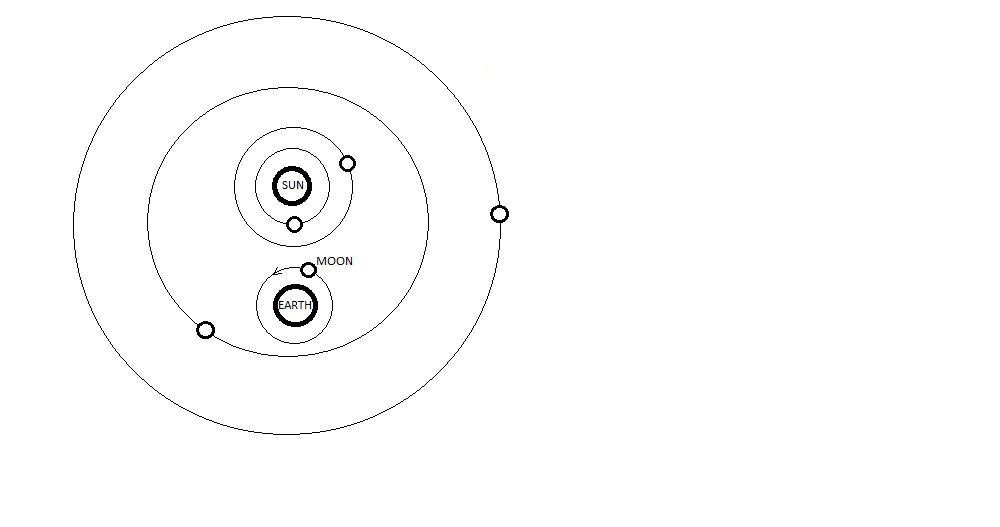
The Tychonian System. The Earth is stationary at the centre and the sun orbits the Earth. However the other planets orbits are all centered on the sun.
Could either side of this debate be proven wrong? There are a couple of places where the Copernican model with the Earth orbiting the sun makes predictions that could disprove the Tychonian System. One of these is the parallax of the stars.
If you move your head from side to side you notice that nearby objects move quickly across your field of view while more distant objects stay relatively still. If you are driving along a straight road and look out of the side window, lamp posts a few feet away will flash by quickly but distant hills on the horizon seem more or less immobile.
This effect can be exploited as the Earth orbits around the sun. Very distant stars, called background stars, will appear to stay still, since the amount that they move is imperceptibly small. But stars that are closer by will shift their positions compared to these background stars. This will only happen if the Earth moves around the sun. In the Tychonian System, the solar system is inside a hollow sphere with the stars attached to the inside wall of this sphere. We see the stars move in the night sky because this sphere rotates and if this were all true then all the stars would move together and would not shift relative to one another: there would be no parallax. I’ll discuss this in more detail in the Chapter on Astronomy; its an important tool in modern day astronomy since if you can measure the parallax of a star you can determine its distance and start to measure the size of the universe.
A second place where the two models predict different things is in the aberration of starlight. Imagine you point your telescope at the night sky and have a single star in view. You could draw a line from where you see the star going back out of your telescope into the sky and that point is where you think the star is. But this view is thrown off if you are moving. If you were moving from left to right say, then the starlight might enter the telescope at the very rightmost point but, since it would take some time to reach your eye at the bottom of the telescope, by the time it reaches your eye the light is on the left hand side of the telescope (see Figure ). In short, the light doesn’t travel in a straight line down your telescope because your telescope is moving. If you didn’t realise that you were moving you wouldn’t and tried to find the star’s position on the sky by drawing a straight line out of your telescope you would think it was more to the left than it actually was.
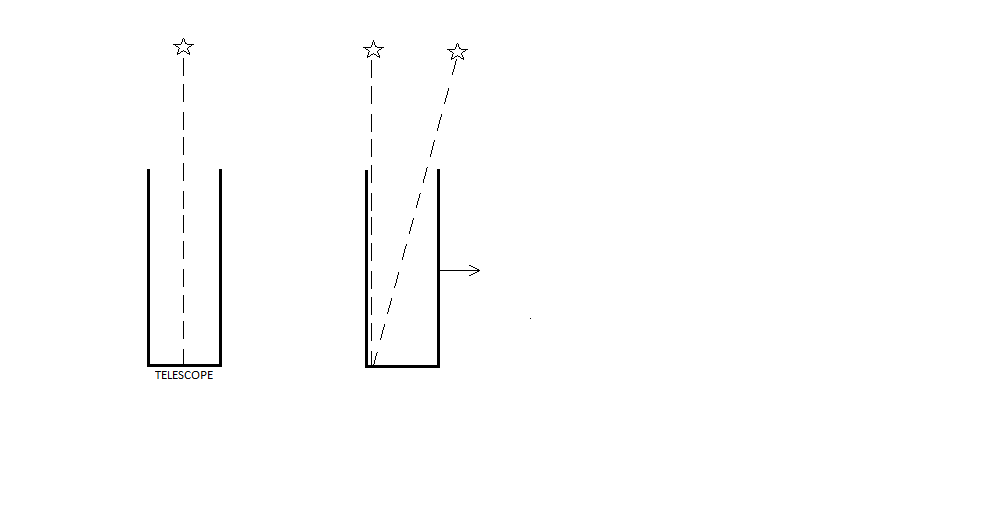
In the left hand picture we assume the Earth does not move and therefore light from a distant star overhead travels straight downwards. Actually, the Earth does move and carries the telescope along with it. As shown in the right hand picture, the movement of the telescope means that the light does not go straight down it. The actual position of the star is a little to the right of the telescope but the light hits the left hand side. If we didn't account for this and thought the light came straight down the telescope we would think the star was on the left hand side of the telescope. This is called aberration.
If the Copernican model is correct, then the Earth’s motion as it orbits about the sun means that just this effect occurs, the light moves from one side of the telescope to the other as it travels to the eyepiece. Which direction it moves depends on the time of year (at one time of year the orbit of the Earth causes the light appears to move from right to left. But six months later the Earth is travelling the other way in its orbit around the sun and therefore light appears to move from right to left. This is subtly different from parallax, and although it is still evidence that the Earth is moving around the sun, crucially it doesn’t tell you how far away the star is.
Of these two tests, only the parallax of stars was thought of at the time. This is possibly because the aberration of starlight will only work if light has a finite speed. If light moved infinitely fast it would leave a star and enter the eyepiece of a telescope in the same instant, with no time for the Earth to move. At that time no one knew for certain that light did not travel infinitely fast, although Galileo had made unsuccessful attempts to measure the speed of light. His experiment to try and determine the speed of light consisted of two people at some distance with covered lanterns. The first person would uncover their lantern and when the second person saw the light they would uncover theirs. The first person would time how long the interval was between them uncovering their own lantern and seeing the second person’s light appear. Unfortunately the speed of light is much too fast to be measured in such a way and looks instantaneous. The first successful attempt to measure the speed of light was much more intricate and made use of far vaster distances, as we shall see in a moment.
Astronomers at the time, Tycho included, attempted to measure the parallax of stars but the shift in position was far too small to be detected with the instruments at the time. The shift is so small because the stars are at such great distances from us. By calculating just how far the stars would have to be, given their parallax was immeasurably small, Tycho concluded it was implausible that they could be so distant and took it as evidence that the Earth was stationary.
Both tests, the parallax of stars and the aberration of starlight, were carried out in more recent times and confirmed that the Earth orbits the sun. The aberration of starlight was actually discovered accidentally by James Bradley in 1725 while searching unsuccessfully for parallax of a star (the first successful attempt to measure parallax would not be until 1838). As mentioned, the aberration of starlight assumes that light only travels at a finite speed and not infinitely fast. This fact was shown by Ole Romer in 1676. One of the moons of Jupiter that Galileo had discovered, called Io, showed a strange pattern of timings in when it disappeared behind Jupiter and when it emerged. Although it was largely regular, as expected for a moon orbiting a planet, in the fine details it disappeared and reappeared slightly earlier or later with no obvious pattern. Romer showed that these discrepancies could be explained by considering where the Earth was in its orbit of the Sun compared to Jupiter. When Io emerged from behind Jupiter, the reappearance would not be seen on Earth until slightly after it happened because the light from Io would take a certain amount of time to arrive. If the Earth and Jupiter were at their most distant points from one another the transit time was more than if the Earth and Jupiter were at their closest. Taking this into account, the patterns of timing Io showed made perfect sense. From this, Romer could not only demonstrate that light travelled at a finite speed but could also make a reasonable estimate of what this speed was.
Bradley’s measurement in 1725 of the aberration of starlight was the first experimental evidence of heliocentrism over geocentrism, but even before this discovery heliocentrism had widespread acceptance across Europe. In order for Bradley to make sense of his measurement he had to assume that light had a finite speed. When Romer first discovered this in 1676 he was working with a heliocentric model [4] and this work was accepted by eminent scientists at the time, for example Isaac Newton references Romer’s results in his seminal 1704 book Opticks [A]. So why was heliocentrism accepted when it lacked any evidence over the existing geocentric ideas and when it was so opposed by powerful institutions such as the Catholic church?
Establishing heliocentrism required a shift away from both Aristotle’s cosmology and his physics. According to Aristotle, the heavens were eternal and unchanging, only in the Earthly sphere of influence (within the orbit of the moon), where things were imperfect, was change possible. As Galileo argued in his 1632 work Dialogue Concerning the Two Chief World Systems, this simply wasn’t true. Firstly, recently two new stars had appeared in the sky, one in 1572 and another in 1604 (the first of these was called Tycho’s star, after his detailed studies of it. These ‘stars’ are actually supernovae, which will discuss in the chapter on astronomy). Secondly, observations through telescopes had revealed the existence of sunspots which would appear and disappear on the Sun’s surface (don’t look at the Sun through a telescope!). These observations showed that the heavens did change and weren’t static and eternal as Aristotle had taught.
But how to counter the assertion by Tycho and others that if the Earth was in motion we should surely feel it? Galileo led the way in converting Europe to heliocentrism because he put forward a complete system of physics, elegant in its simplicity and powerful in its explanatory power, that was entirely different from the physics of Aristotle.
The Principle of Relativity
Doing away with the idea of the Earth being the centre of the universe requires a radical change in thinking and not just in the way we might expect, a whole new system of physics is required. Aristotle’s physics gave a reason for why objects fall towards Earth: they are trying to reach the centre of the universe. When Copernicus put forward the idea that the Sun was the centre of the universe, not the Earth, this explanation was shattered. One of the people highly influenced by Copernicus was Giordano Bruno who suggested that if the Earth went around the Sun then the universe could be infinite in size, with any number of planetary systems.
When Galileo was active in the area, shortly after Bruno, he didn’t commit an opinion[5], but all that was necessary for his theories was that the Sun was the centre of the solar system, rather than the universe. Explaining why objects fall to Earth would require Newton’s laws of motion and gravity, but these themselves were highly influenced by work that Galileo performed, chiefly his principle of relativity.
As well as being a highly influential astronomer and the first person to systematically turn a telescope to the heavens, Galileo Galilei was also one of the first people to apply the scientific method in a way that bears some resemblance to the way it is applied today: performing experiments, making observations, searching for mathematical descriptions of what had been observed. Galileo spent a lot of time considering the physics of how objects moved and was the first person to realise that only the amount of air resistance an object encounters effects how fast it falls, otherwise all objects fall at the same rate no matter how heavy or light they are. This is in stark contrast to the physics of Aristotle where heavy objects fall faster than light ones. In Dialogue Concerning the Two Chief World Systems, Galileo stated and explained the Principle of Relativity, which is now a foundation of all modern physics, and demonstrated how the Earth could be in motion around the Sun without us feeling it.
The Principle of Relativity can be stated in this way:
“The Laws of Physics should be the same for any two observers who aren’t accelerating with respect to one another.”[B]
What this means is that the laws of physics and the results of any experiment you care to perform will be the same no matter whether you are in the Arctic or Australia, whether you are facing East or whether you are facing West. This may or may not seem an obvious point to you, but when it was written it was fairly novel.
Recall the cannonball argument that Tycho made. Tycho, among many others, claimed that if you pointed a cannon Eastwards and fired it then the rotation of the Earth would help carry the cannon away from the cannonball, so the projectile would land further from the cannon than if you pointed the cannon Westwards, in which case the rotation of the Earth would carry the cannon in the same direction as the cannonball was fired in.
So in the case above we get different results if we carried out our experiment (firing the cannon) while facing East than if we carried it out while facing West. But Galileo argued that this wasn’t true.
Imagine that you stand on shore and throw a ball at, say, 10 miles per hour. Now imagine that there is a ship sailing past you on the shore at 20 mph and that you have a friend in the hold of the ship who also throws an identical ball with the same strength as you threw yours. How fast does the second ball travel? Well according to you, on the shore, the second ball travels at 30 miles an hour. Because you’re adding the speed of the ship to the speed of the ball and getting 20mph + 10mph = 30mph. But, according to your friend in the ship’s hold the ship is not moving. If your friend stands in the centre of the hold then the floor and the walls and the roof of the hold will all stay still and it is the shore that is moving at 20 mph, not the ship. So from your friend’s point of view, when they throw the ball it is only travelling at 10 mph.
Because the ball thrower is at rest relative to the ship, they don’t catch up with the ball or move away from the ball any more than they would if they had performed the same throw when standing still on the shore. This is the same for the cannon firing we mentioned earlier. Even if the surface of the Earth is rotating at 1,000 mph (which it is), since the cannon is at rest relative to the Earth, it won’t catch up with a cannonball it fires Eastwards nor will it move away from a cannonball it fires Westwards.
It’s also important to note the second point in the definition of the Principle of Relativity
“The Laws of Physics should be the same for any two observers who aren’t accelerating with respect to one another.”
When we talked about the person standing in the centre of the ship’s hold we mentioned that the floor and walls and ceiling of the hold all seemed completely still to that person (in fact, if the sea was calm and they didn’t have a window to look out of they wouldn’t be able to tell if the ship was moving through the sea at all). But if the ship was accelerating then this wouldn’t be true. I’m sure you’ve felt that lurch when a bus or a train starts moving- the walls and floor and ceiling aren’t staying still. The Principle of Relativity isn’t holding in this instance, if your friend threw a ball towards the front of the ship while the ship was accelerating then they would catch up with it.
So, does the rotation of the Earth have any acceleration? Well even if it is not changing speed it certainly changes direction. If you picked a spot on the surface of the Earth at dawn it would be moving towards the Sun but at dusk the same spot would be moving away from the Sun, so it has changed direction. If you point a cannon East or West and fire it then the rotation of the Earth has no effect, but if you pointed it North or South then the rotation of the Earth would cause the path of the cannonball to appear to curve away from the cannon, since the ground is rotating underneath the cannonball as it flies. This effect is only very small though, and the cannonball would have to travel thousands of miles before the deviation was noticeable.
Before moving on there’s an important point that I’d like to draw attention to, that Galileo’s work should serve as a warning against trusting too much in common sense. As a child it is hard to believe, when told, that it is the Sun which is still and the Earth which is moving. That just feels wrong, it’s intuitively obvious that the Earth must be still because we can’t feel it moving. But sometimes to get to the heart of what is actually happening it’s necessary to look beyond our first intuition and ask whether what we think is going on is consistent with all of the evidence available to us. If you assume that the Earth is stationary, you can explain the circular movement of the Sun in the sky but not the more complicated movements of the planets or the phases of Venus. And sometimes the truth, that the Earth moves around the Sun, goes against what we intuitively feel but can explain all the phenomena that we observe. So sometimes even when physical theories throw up counter-intuitive results, such as what is so commonly called “weirdness” in quantum mechanics (which we’ll be talking about later) what we should really be asking is not whether it makes intuitive “sense” but whether it explains what we observe.
Now that we’re familiar with it, this is a good place to pause for a moment and consider to what extent the Principle of Relativity was known before Galileo published his Dialogue. In the 1500’s, Christoph Rothmann in his correspondence with Tycho uses something akin to it to rebut the cannonball argument described above- Rothmann considers a stone being dropped from a tower and states (correctly) that the stone would land beneath where it was dropped from regardless of if the Earth was turning. What& rsquo;s not clear is the mechanism that Rothmann attributes this to. Does he think that the air, in motion, sweeps the stone along with it? (In the same way that a river would sweep a canoe along with it.) The Principle of Relativity shows us that the air is not necessary for the stone to land beneath where it is dropped: even if this were done on the moon where this is no atmosphere the stone would land beneath where it is dropped. As far as I’m aware, Galileo was the first person to fully formulate the Principle of Relativity as a proper foundation of physics, make it explicit and to bring it into mainstream intellectual discussion. But, as with many discoveries, in reality the credit extends far beyond a single person. As an aside I’ve often seen the Principle of Relativity attributed to Copernicus by way of quotation by Martin Luther, but these appear to be in error and since the quote by Luther is mocking Copernicus’ theory of the Earth going round the sun it’s dubious why this quote is attributed to him.
Newton’s Laws
By applying the principle of relativity, Galileo showed how the Earth could be in motion around the sun without us feeling it or noticing it in the trajectories of cannonballs or stones. But there was still a catalogue of unanswered questions. Why did the planets move in their circular (or nearly circular) orbits around the Sun? Why did objects fall to ground if the Earth was not the centre of the universe as Aristotle had claimed, or in some other way different from the rest of the universe? What would cause objects to come to rest if it was not their natural state of being?
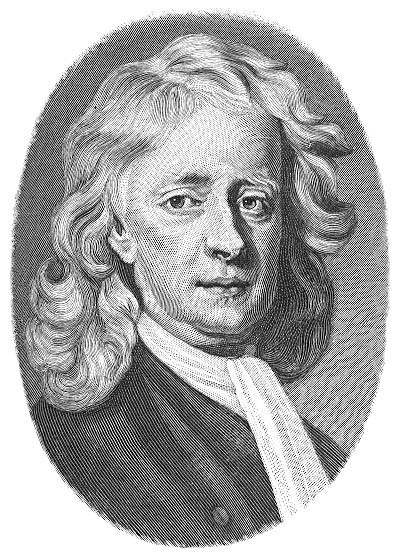
Isaac Newton.
Galileo had partly answered this. He suggested that matter might be attracted to other matter, which would hold objects like the sun and the Earth in spherical shapes [6], and combined with his principle of relativity this could explain the motion of the Earth around the Sun. But it was Isaac Newton who showed that all the apparently different motions of all objects, Earthly or heavenly, can be explained by the same simple and well defined rules. These were the three Laws of Motion and the Law of Universal Gravitation which he published in his work Principia Mathematica:
1- An object that is at rest will stay at rest and an object in uniform motion will stay in uniform motion unless acted on by an external force.
2- The acceleration a body undergoes is equal to the force acting on it divided by its mass.
3- When a force is applied an equal force acts in the opposite direction.
G- The force of gravity between two bodies is larger the heavier the two bodies are and weaker the more distance there is between them.
Let’s look at how these laws can be explain the motions of both objects on the Earth which we encounter everyday and objects in the Heavens. Firstly let’s see how these laws govern the path of a ball thrown through the air.
According to the first law, any object will travel in a straight line unless it is acted on by a force. When the ball leaves your hand it is acted on by the force of air resistance which is the force from the millions of particles of air the ball is pushing through. As the ball collides with each particle of air, the ball pushes that particle aside and as it does so the particle pushes back in with an equal force but in the opposite direction as described by the third law. The effect of all these collisions with air particles is to gradually slow the ball until it comes to a halt.
As it travels forwards, the ball falls towards the ground because of the force of gravity. The ball and the Earth both attract one another- again an equal and opposite reaction. The reaction is opposite because the ball moves down towards the Earth and the Earth moves up towards the ball, and equal because both bodies feel an equal force. Because the Earth is so many billions of times heavier than the ball, the Earth undergoes only a tiny acceleration whereas the acceleration undergone by the ball is much larger; this is why it seems like the Earth doesn’t move at all but the ball falls towards the Earth.
Now we’ve seen how these four laws determine the path of a ball you’ve thrown lets look at how the same forces act on the objects we see in the sky. The stars are, for our intents and purposes, stationary in the sky (they are moving about under their momentum and the force of each other's gravity, but the distances they move in a human lifetime is pretty negligible compared to their distances from the Earth). It is the Earth spinning on its axis which makes the Sun rise and set and the stars appear to trace out circles across the night sky. The Earth spins like a basketball spun on a player’s finger. But whereas the the basketball has the force of the air always resisting it, slowing it down, the Earth is spinning in empty space so it keeps its uniform, spinning motion.
Under the same laws, the moon orbits the Earth. At a given instance it has some momentum: it is travelling at appreciable speed at a right angled direction to the Earth (see Figure). According to the first law, if there were no external forces a body travelling in a straight line would continue in a straight line. But in this case there is an external force acting on the moon: the gravitational attraction the moon has to the Earth. This force diverts the moon from the right angle it was making, pulling it towards the Earth. Being forced to follow both of these movements at the same time (its original right angled movement and its new movement straight towards the Earth), the result is that the moon moves on a diagonal path (see Figure). This process repeats itself constantly so that rather than following lots of tiny diagonal paths the moon follows a circle around the Earth. This circle, almost unchanging through thousands of years, is due to the perfect balance between the moon’s momentum and the force of gravity from the Earth.
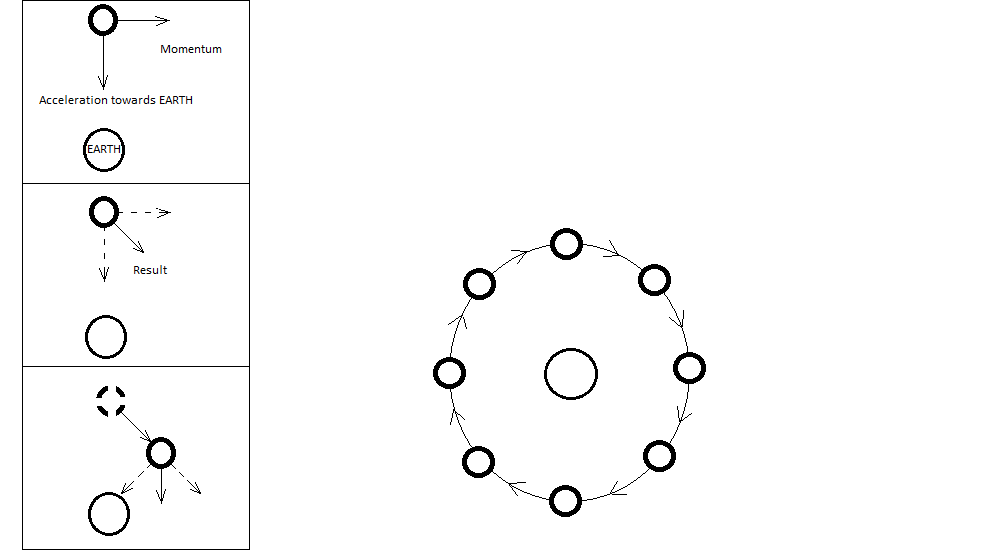
How the moon has a circular orbit of the Earth. The momentum is always 90o from the Earth and the acceleration from Earth's gravity is straight towards the Earth. The resulting direction is between the two.
Dualism
Many of the essential ingredients for Newton’s Laws had been laid out about 50 years previously by Galileo: the circular orbits of planets, the constant motions in straight lines etc. But Galileo never brought together all the knowledge he had obtained through his experiments. Had he thought to apply the laws he knew from his experiments to celestial bodies he would have surely found the universal laws of motion.
Probably the most ingenious part of what Newton did was to recognise that, rather than having two different rules being applied in two different domains as Aristotle taught (Earthly bodies come to rest, Heavenly bodies move continuously in circles), the two apparently different types of motion could be explained by applying the same laws in very different environments. The genius was to see that there could be a Universal Law that applied everywhere and to all things. What is key here is that anything we can observe is part of the same universe as ourselves, so it must be interacting with us at some point, at some level. For example, the Sun affects the Earth in the very obvious way that its heat and its light reach the surface and warm it up and illuminate it. If the sunlight can warm the planet then that is an interaction between the Sun and the Earth via light. If they are to be subject to physical laws at all, at some point they must both be subject to a common physical law which governs how light acts, because the Sun generates light and the Earth absorbs it.
At the start of the 18th Century there were three separate theories for light, electricity and magnetism, although an increasingly large body of experimental evidence was suggesting that electricity and magnetism were intertwined. During the middle of that century James Clerk Maxwell published a theory showing precisely and mathematically how the two were related, creating the theory of electromagnetism which showed how the movement of an electric wave would create a moving magnetic wave which would in turn create a moving electric wave and so on. It had been noticed already that the speed at which these waves travelled was approximately the speed of light and Maxwell’s theory of electromagnetism showed that theoretically electromagnetic waves had the same speed as light waves, leading Maxwell to conclude that light was a particular kind of electromagnetic wave. This brought light, electricity and magnetism all into the same unified theory. In the 1960’s electromagnetism was further unified with the weak nuclear force, a force not even known about in Maxwell’s day, in the theory of what is known as the electroweak force.
It is the mark of a good theory if it can explain a wide range of phenomena using the same fundamental language. Which isn’t to say that a theory is necessarily bad if it is of limited scope, only that it should be a giant red flag that the theory needs to be understood within in a wider context. Indeed, we would be in quite a lot of trouble if we labelled any theory as “bad” just because it couldn’t, at some fundamental level, account for everything in the universe because we don’t currently possess such a theory. All of current physics can be understood as three fundamental forces: electroweak, the strong nuclear force and gravity. A lot of work is done trying to further unify these three, and this is perhaps the ultimate goal of fundamental physics, but currently our best understanding of them is as separate entities.
Souls
The preceding discussion was to allow me to try and tackle the question “Do we have souls?” I think many of us feel that people, if not all conscious animals, must be in possession of some kind of soul that is separate from our physical presence, since the phenomenon of consciousness seems so fundamentally different to any other physical phenomenon we observe.
I wouldn’t personally be confident enough to say that I know the answer to that question beyond any doubt, but as far as I’m concerned the answer is “no”. As knowledge of the physical world has progressed it has been found that phenomena that appeared unrelated or even fundamentally different from one another often had a common underlying cause if one looked deep enough.
This is the mind-body problem, the problem that there is an apparently thinking, unphysical mind and a physical, unthinking body. Closely related is the problem of interaction, the fact that the apparently unphysical phenomenon of consciousness can have effects on the physical world means that at some point the mind must interact with the body if the body is obeying its commands.
This line of thinking goes back to ancient times, for example Epicurus, who lived 341-270 BC, argued that since the soul acted upon the body it must have a physical nature [C]. In 17th century Europe the most famous writer on the subject was probably René Descartes who, along with Aristotle, was an influence on Newton. Unlike Epicurus, Descartes did not believe that the soul was part of the physical world but that it was distinct from it and somehow incorporeal. But a key point is that both believed that the body could have effects on the soul as well as the other way around, which to some extent must bring the soul into the domain of the physical laws governing the world.
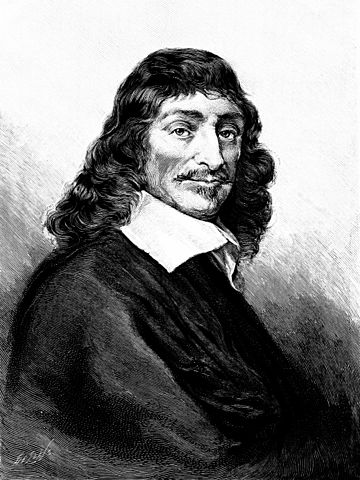
René Descartes.
To me, there is an unmistakable parallel between the interaction problem between mind and body and the interaction problem between the sun and the Earth in Aristotle’s physics. If there is a point of interaction between the two then at that point at least they must be subject to the same physical laws.
In fact we now know that the sun is indeed made up of the same basic particles, protons and electrons, that make up all of the atoms on Earth and are subject to the same rules of chemistry. It is only the sheer number of particles concentrated in one place that makes them glow in the sun and stops them coming together to form atoms and rocks and oxygen and all the various other objects found on the Earth.
The same atoms make up the sun as make up the ground under our feet and indeed ourselves. The laws of chemistry that govern atoms in the sun and in the ground govern atoms that make up living things. The laws of biology are an emergent property of the laws of chemistry; you could in principle derive the laws of biology as logical consequences of the laws of chemistry, although in practice the complexity probably puts this feat beyond human thinking. Similarly, consciousness is a phenomenon that can’t satisfactorily be described by the laws of biology, but (as far as we currently understand it) you need a biological brain for consciousness to occur and brain damage can alter consciousness or destroy it entirely, so somehow consciousness must be an emergent phenomenon of biology.
Where did Newton leave us?
Newton’s work forever altered the human perspective on the universe. For the first time everything, from entire planets to grains of dust too small for the eye to see, were brought under the same set of laws. The gravitational attraction between two objects and the momentum they exchanged when they collided would dictate exactly how they would move. (There are forces other than gravity, which are of course hugely important to physics, but ultimately the trajectories that objects take are dictated by their momentum and how they exchange it.)
Even though it might be impossible in practice, in principle someone who knew precisely the position and momentum of every object, every particle, in the universe could predict the whole future and past of the universe simply by applying the laws of motion. Interestingly, Newton himself rejected this idea. He thought that the circular orbits of the planets around the sun were too perfect to have arisen by chance and that the gravitational interactions between the planets would gradually but eventually disrupt their orbits. In Newton’s view, divine intervention was required to correct these orbits and keep the heavens in order [7].
As we will see in a later chapter, we can confidently account for the apparently well crafted orbits of the planets: they formed alongside with the sun from the same rotating disc of matter. And by precisely applying Newton’s own laws we can see how these orbits would remain stable through billions of years. In short, we have no need for the hypothesis of divine intervention.
Most of Newton’s contemporaries were quite dismissive of his idea of divine intervention, but for a completely different reason. The consensus was that God would have been able to design the solar system perfectly enough that there would be no need to periodically adjust the planets’ orbits. If the planets and everything else obeyed Newton’s laws, people realised that the evolution of the universe could indeed be predicted. Descartes not only believed that the paths of bodies in the heavens could be predicted but also the actions of living creatures, seeing them as automata bound to obey the laws of motion just like all other things. Descartes set aside only mankind for special treatment, based upon his belief that people possessed souls, which were presumably free from the laws of motion [8], a concept we can hopefully dismiss given the preceding discussion.
So, where did Newton leave us? He left us with what is sometimes called a “clockwork universe”. This is a universe that behaves like a wound up clock: given a knowledge of all the parts and their current states we could then predict the configuration of the universe at any point in the past or the future. This is a very neat, clean and satisfying way to look at our universe. Unfortunately, over the coming centuries physicists would go on to systematically dismantle this world view and we would be left with something altogether less easy to grasp, a universe where even terms like “past” and “ future” would lose their concrete meanings.
Key Points
Even if an idea seems silly or counterintuitive, such as the Earth moving around the sun, we should accept it if it can explain observations.
If different systems (e.g. the Sun and the Earth or the Mind and the Body) can interact in some way then they must at this point be governed by the same physical laws.
Newton’s laws give us clean and predictable view of the universe, but this would be radically altered by new physics in the coming centuries.
Footnotes
[A] For a further example, Protestant schools in Copernicus’ native Poland taught heliocentrism as being correct in 1722, with Catholic schools following sixty years later. Over the century before this, there was support building for heliocentrism across Europe. Barbara Bienkowska- From Negation to Acceptance: The Reception of Copernicus' Heliocentric Theory
[B] It might bother you that this definition uses the word ‘observers’ meaning that it relies on having people about consciously observing things. If it does you can use this definition: “The Laws of Physics will produce the same effects in any two frames of reference that aren’t accelerating with respect to one another
[C] "There is the further point to be considered, what the incorporeal can be, if, I mean, according to current usage the term is applied to what can be conceived as self-existent. But it is impossible to conceive anything that is incorporeal as self-existent except empty space. And empty space cannot itself either act or be acted upon, but simply allows body to move through it. Hence those who call soul incorporeal speak foolishly. For if it were so, it could neither act nor be acted upon. But, as it is, both these properties, you see, plainly belong to soul.” -Letter to Herodotus
References
[1] Dialogo ... dove ... si discorre sopra i due massimi sistemi del mondo. English / Galilei, Galileo, 1564-1642.
[2] History of the planetary systems from Thales to Kepler / J.L.E. Dreyer.
[3] The Secret of the Universe / Isaac Asimov
[4] Philosophical Transactions of the Royal Society of London 12, 1677: 893–94 and the accompanying Plate XI
[5] "I might very reasonably dispute whether there is in nature such a center, seeing that neither you nor anyone else has so far proved whether the universe is finite and has a shape, or whether it is infinite and unbounded." See [1].
[6] See preface of [1].
[7] Opticks, 2nd edition / Isaac Newton
[8] Encyclopedia of the Scientific Revolution: From Copernicus to Newton, Clockwork Universe / Wilbur Applebaum